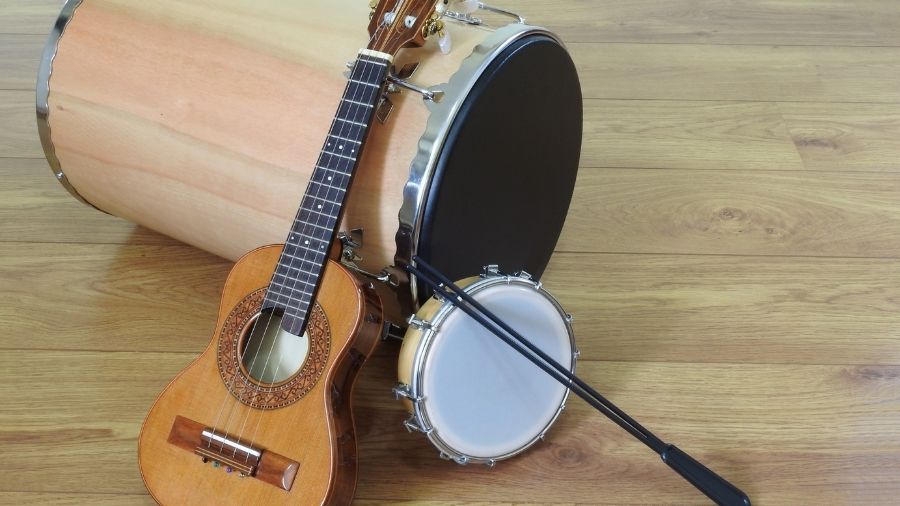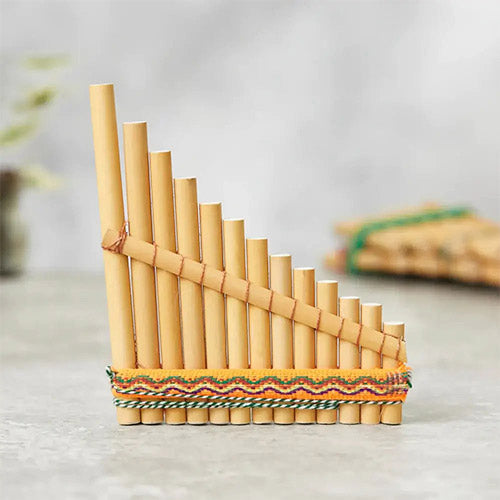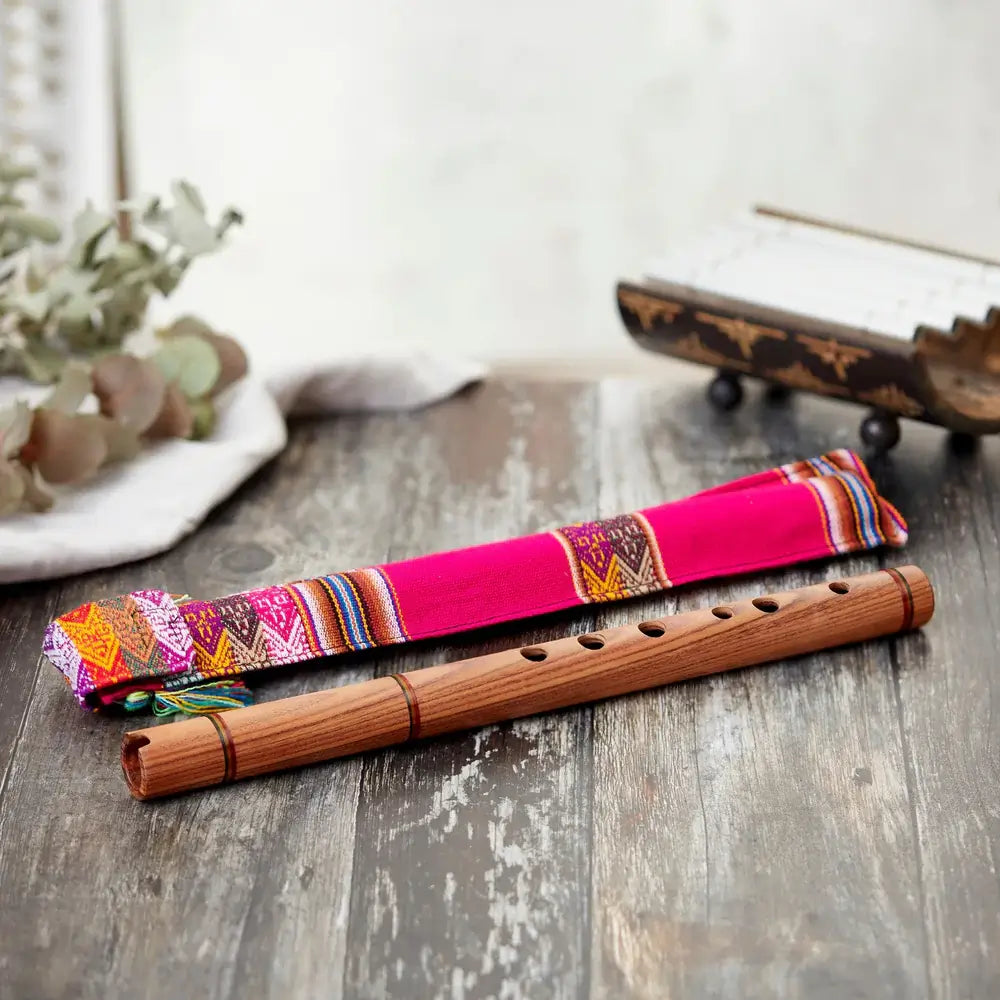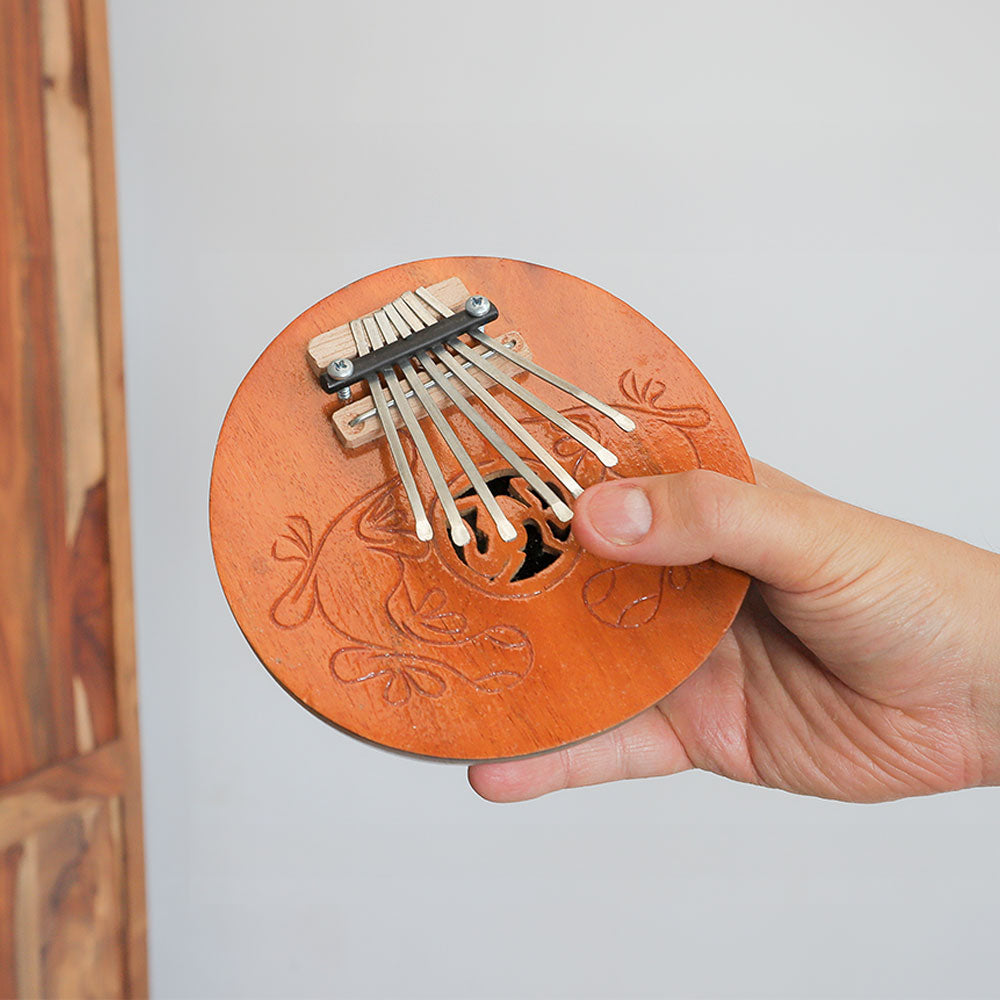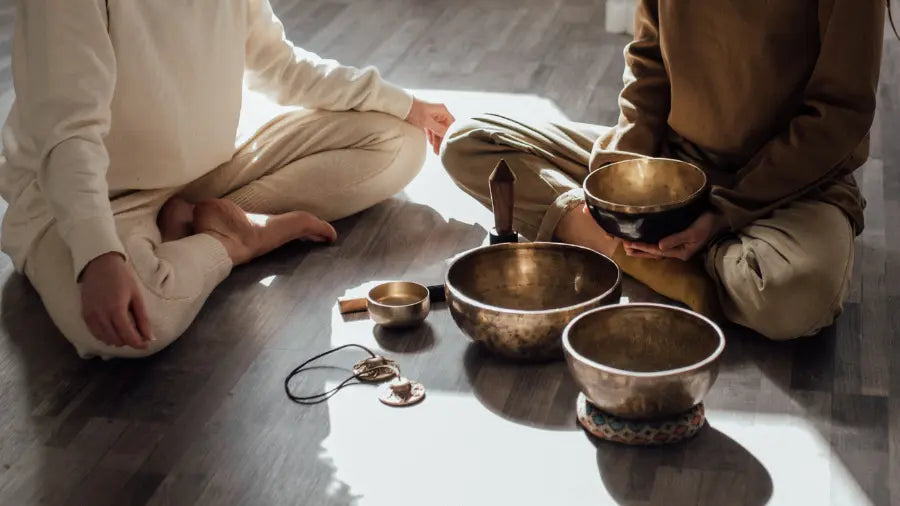Traditional Brazilian instruments form the foundation of beloved genres like samba, bossa nova, and Afro-Brazilian music. These instruments drive the complex rhythms and create the rich, textured sounds that have left a lasting mark on music worldwide. We will explore the most traditional Brazilian musical instruments that help define Brazil's sound.
1. Tamborim
The tamborim is a small frame drum played with a stick and is used to produce rhythms. It is an important instrument in samba where it plays quick syncopated patterns that complement large percussion instruments like the surdo and pandeiro. Its high-pitched tone provides sharp tones making it perfect for Carnival parades.
We offer the Contemporanea Tamborim which is crafted in Brazil using traditional methods. Available in black or white, this lightweight and durable instrument features a nylon shell and six lugs, ensuring long-lasting performance. Ideal for beginners, schools, and professionals, it offers easy handling and a crisp, clear sound, making it a fantastic addition to any percussion collection.
2. Berimbau

The berimbau (also known as a castanha agogo) is one of Brazil's most famous instruments, especially within the context of capoeira—a Brazilian martial art that blends dance, acrobatics, and music into a powerful performance. This single-stringed percussion instrument is made from a wooden bow, a metal string, and a gourd resonator.
Played with a stick, the berimbau produces a deep, resonant sound as the rhythmic foundation for capoeira performances. There are three types of berimbau, each producing a different tone: the gunga, which is the lowest pitch; the medio, a medium pitch; and the viola, the highest pitch.
3. Reco-Reco
The reco-reco is a scraping instrument and is a type of guiro instrument. Its made from a hollow tube and is played by scraping the stick along the ridges to produce a raspy tone. The reco-reco is often used in samba and other Brazilian genres to accentuate the rhythm. This instrument provides texture and works well when played alongside other percussion instruments like the Pandiero and tamborim.
4. Cavaquinho
The cavaquinho is a small four-stringed instrument that is similar to the ukulele but is used in Brazilian genres like samba and choro. The cavaquinho is played by strumming. The cavaquinho's presence in Brazilian folk music dates back to Portuguese colonization. It is often used to play syncopated rhythms that complement traditional percussion instruments.
5. Pandeiro

The pandeiro is a type of hand drum that resembles a tambourine and is considered one of Brazil's most versatile percussion instruments. It is often played with slaps, taps, and shakes, creating intricate rhythms. The pandeiro is an essential part of samba and other Brazilian rhythms and is frequently used in both small ensembles and large musical groups.
6. Cuíca
The cuíca is a friction drum that produces a high-pitched, squeaky sound. It is typically made of a hollow wooden or metal shell with a membrane stretched over the opening. A small stick is attached to the membrane, and the player creates sound by rubbing the stick while pressing their hand against the membrane.
This unique sound is a signature element of Brazilian samba music. The cuíca is usually played alongside other percussion instruments to create an energetic rhythm. Its unique sound stands out especially in samba music, bossa nova, and other regional music styles.
7. Agogô
The agogô is a double-bell percussion instrument that produces a bright metallic sound. It is typically played by striking the two bells with a stick, and its tones add rhythm to Brazilian music. The agogô has its roots in African musical traditions and was brought to Brazil. These instruments are part of the tone block family.
8. Bateria
Bateria is not a single instrument but refers to the entire percussion section of a samba school or ensemble. It comprises various percussion instruments like surdos, pandeiros, tamborins, and agogôs, all of which come together to create the driving rhythms of samba music. The bateria forms the heartbeat of samba parades, driving the intense, infectious rhythm that energizes the dancers and the audience. It exemplifies Brazil's collective musical spirit, where every instrument contributes to a powerful unified sound.
9. Xylophone
Although not exclusively Brazilian, the Xylophone is used in some Brazilian music genres, particularly in the regional folk music of the northeast. It consists of several wooden bars that vary in length and produce melodic sounds when struck with mallets. In Brazilian music, the Xylophone is often used in smaller ensembles, adding a melodic element to the rhythm-heavy music. It is especially common in the music of the northeastern states, where it is used alongside traditional percussion instruments.
Explore our stunning range of xylophones.
10. Surdo

The surdo is a type of bass drum that is used in the samba rhythm section providing the foundational beats anchoring other percussion instruments, especially in samba schools during Carnival. Played with soft mallets is essential in maintaining the pulse of the music. These instrument come in a variety of sizes. The largest surdo is playing by multiple musicians during parades whilst hte small surdos produce higher pitched accents.
Surdos come in various sizes, each adding depth to the layered rhythm. The largest surdo, typically played by multiple musicians, produces a deep, resonant tone that drives the rhythm of the parade. At the same time, the smaller surdos contribute higher-pitched accents to the overall sound.
Want to see the full collection? Click here to explore more!

